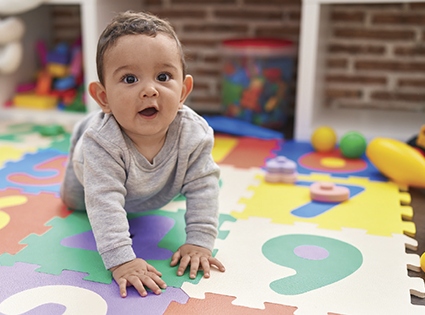Dunleavy’s Approach to Alaska’s Childcare Crisis
Aside from education funding, one of the most pressing issues flagged by Alaskans during the public testimony sessions on the budget is the state of Alaska’s childcare system.
For families, it’s a system that’s hardly affordable—Alaska is one of 33 states where it’s cheaper to send kids to college than it is to send them to daycare—and the right time to get on a waitlist is as soon as the pregnancy test comes back positive. For providers, those high prices haven’t translated into a profitable or even very stable business model with low wages and a churn of vacancies being the norm. While it’s a complicated problem that has far-reaching impacts on the rest of the state’s economy, parents and providers have been clear about what’s needed in the near term to ease the crisis: $15 million in grants for childcare providers. It’s not a cure-all for the system, but the grants, advocates say, would go a long way to increasing the wages for childcare workers and provide some help as the federal money—some $50 million over the course of the pandemic—runs out. But at a childcare-focused announcement on Thursday, Republican Gov. Mike Dunleavy dismissed the entire notion of direct aid to the childcare industry as a “knee-jerk reaction.” His proposal, which was the point of the announcement, is to establish a task force that would start from square one, study the issue and provide a report suggesting fixes to him at the end of the year. Those fixes—if they must go to the Legislature for law changes or additional funding—wouldn’t likely be implemented until mid-2024. “I’m not going to support $15 million in childcare because we don’t even know what the childcare is we’re talking about,” Dunleavy told reporters Thursday in Anchorage, according to a report by the Anchorage Daily News. “But just to say $15 million—who knows, after the task force is done, it could be more. It could be less. We don’t know that until we go through this process.” Several votes to provide such funding through the operating budget have been narrowly rejected in the House—where Republicans recognized the need for childcare but lamented that the state of the state’s budget deficit, nearly $600 million when you include the dividend and a one-time boost to school funding, means they simply can’t afford it—but could find more support in a Senate that seems to be more amenable to taking steps to address the state’s ongoing problems around childcare, education, and employee retention. The task force is set up with 11 voting members—three of whom will be from the departments of Health, Education and Early Development, and Labor and Workforce Development—as well as eight members from a wide array of childcare programs, including military, tribal and faith-based programs. While most involved have been generally positive on the idea of the governor’s task force putting additional attention on the issue with the potential for larger fixes, advocates say there’s still a very real need for money now. “Accessibility, affordability, and quality are not attainable until you actually have workers in the childcare sector willing to do the work, and you’re not going to get that as long as you’re paying $13 an hour,” Blue Shibler, executive director of the Southeast Alaska Association for the Education of Young Children, told the ADN. “What’s the point of increasing accessibility to a system that’s going to fall off a cliff? Frankly, that is exactly what’s going to happen if we don’t do something to stabilize the child care workforce this coming fiscal year.” |
